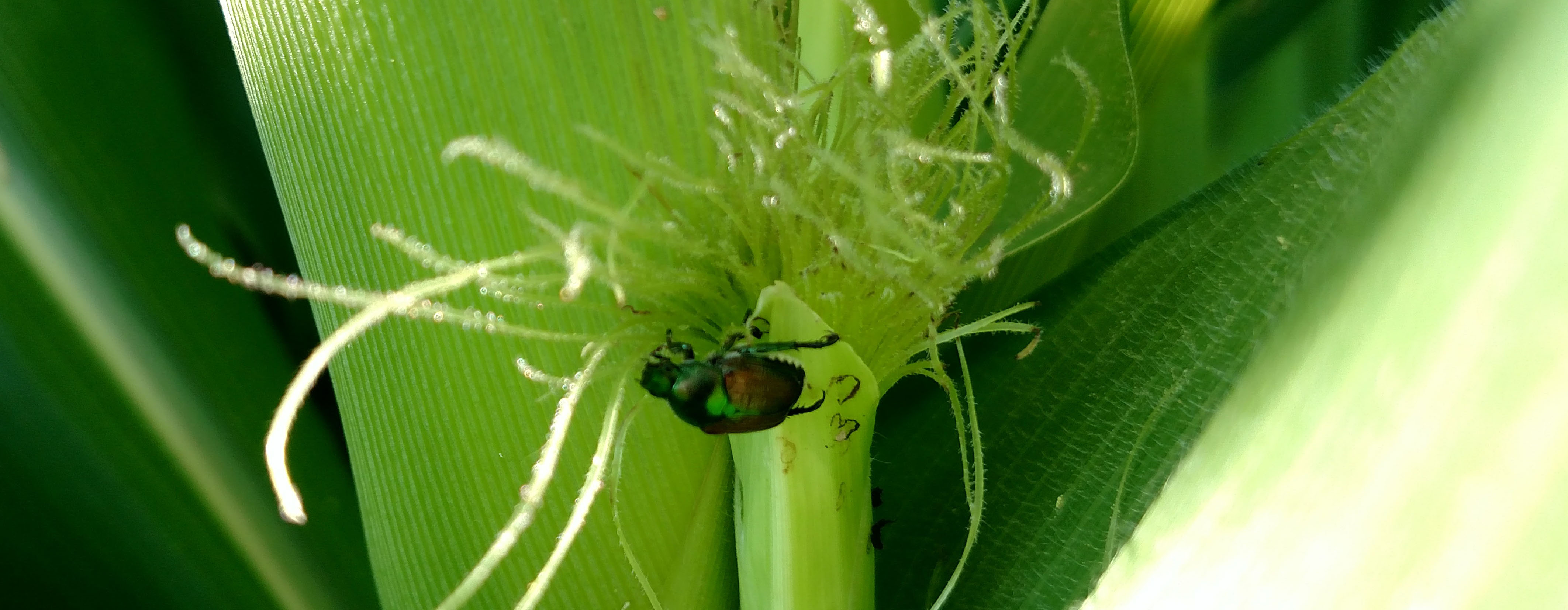In Chemical Resistance Part One we discussed how misusing chemicals can create “superbugs” by creating a chemical memory that critters pass to their next generation (what doesn’t kill you makes you stronger; nothing in science is 100%).
In Chemical Resistance Part Two we discussed the three main ways chemicals are misused that create these superbugs: using only one chemical for treatment (a boxer using only a right handed uppercut), using the wrong chemical for the wrong critter (antibiotics used on a virus), and using the wrong dose (the chemical storm isn’t the appropriate strength).
Again, I use the word “superbug” and “critter” to describe any pest that causes problems and requires treatment methods, be it bacteria, virus, fungus, insect, arthropod, or weed. The words “chemical”, “medication”, “drug”, and “pesticide” are usually used interchangeably.
But what can we do to prevent superbugs from taking over the world?

There are three general ways to treat and prevent critters developing resistance to chemicals used as pesticides:
- Use more than one specific chemical, making sure that the different types of chemicals affect the pest in a variety of ways. In the world of pesticides, this is called using multiple “modes of action”. If possible, use non-chemical means as well. To use our “Rocky” boxer superbug example, this would be choosing a number of moves to defeat our opponent, utilizing uppercuts, jabs, crosses, hooks, ducks, and even shoeshines with both hands. And move those feet!
- Make sure you know what critter you’re fighting. If visual details don’t tell you (in the form of symptoms or identification of the pest), call an expert (like a doctor or agronomist), and send in a sample to a lab to be identified. {Nerdy note: Lab rats are cool and know so much!}
- Use the right dose. Have a large arsenal that includes more than just treating symptoms with chemicals after the fact. Consider all factors needed to make an informed decision. Can you prevent future problems? Take ALL the medication; read the labels! Know how to use the chemical.
In the agronomic world, there are three types of pests: Weeds, Diseases, and Insects
Weeds

- Herbicides have different methods of killing weeds. Their modes of action include stopping the synthesis of amino acids (what makes up proteins) or lipids (what makes fats), stopping photosynthesis (how a plant makes its own sugar or food), and messing with growth regulators or cell membranes. {Nerdy note: want to give a plant a permanent? Give it a growth hormone disrupter like dicamba. Plants do not like perms.} Non-chemical methods of weed suppression include crop rotation, tillage, narrow row spacing, changing the crop’s planting date, and roguing unwanteds that escape other methods (c’mon, what teen living near a farm hasn’t walked beans?!?!?).
- The best way to know what you’re up against in a field as far as weed pressure and type go is to actually go walk in the field—all of it. Identify the weeds correctly. Take photos or samples to someone if you don’t know for sure.
- Don’t stop with knowing what kinds of weeds are out there, where they are, how big they are, and how many of them are out there, but know the history of the field as well. What problems has this field had in the past? What crops have been farmed in the past? What are the tillage and irrigation practices? What else has been used or tried? Read the label for the herbicide: What mixes of chemicals are best for the weeds out there? What adjuvants need to be used (or avoided) to make the chemical more effective? Does the chemical need to be incorporated into the soil to intercept roots or coat the leaves of the weeds? Does it need rain to activate, or need to dry a certain amount of time before there is precipitation? Is it a residual, or does the chemical only work on contact? If this overwhelms you, call an expert—find an agronomist!
Diseases

- Many crops have a number of hybrids or varieties that have been tested to be resistant to several diseases. If you know a field has had trouble with a certain disease in the past, choose the right seed to prevent problems from occurring. Modes of action for fungicides include stopping respiration {Nerdy note: fungi breathe, did you know that?}, rupture cell membranes, stop growth or mitosis (their method of reproduction), and messing with metabolism (how they use energy or get their food).
- What exactly is the problem with the crop? If it is a disease, make sure the symptoms only point to the one disease. There are laboratories that test for this. Many crop diseases are fungal, but there are bacterial and viral infections, too. Is it a nutrient deficiency? Perhaps the crop needs fertilizer. Is it a root issue? The soil could be water logged, or there could be a drought. Is it from insect damage? {Nerdy note: There is a new species of insect called the soybean gall midge that attacks soybeans whose symptoms mimic the disease phytophthera. Tricky little critters.}
- When choosing a chemical, are you using seed treatment when planting or foliar spray once the symptoms are showing? Does the chemical get placed in the soil or on the plant? How long does it need to dry—check the weather. How developed are the plants? How severe is the disease? Where is the disease located in the field—confined only in spots, along the edges, or in the whole field?
Insects

{Nerdy note: This category includes arthropods and other creepy crawlies that are insect-like, too. Mites, which are a pest, are actually cousins to spiders and not insects.}
- Some crops have traits that were bred to prevent specific insect damage. Insecticides have modes of action that alters, inhibits, or interferes with how the pests breath, grow and develop (like moulting or hormone development), metabolize food and energy, nerves, and muscles. Many pests have natural enemies, and introducing or encouraging beneficial insects can help keep a low threshold number.
- What exactly is the true case of the problem? What is the pest? Many larvae and beetles look alike or have variety within the same species. Know what damage they cause and how they act. Do they feed on the leaves or the roots? Do they bore through the stems? Do they hide in the grain or lay their eggs near the top or bottom of the plant? What does their frass {Nerdy note: this is a fancy word for poop} look like? Capture a critter, take a picture, pull apart and sample the plant—send these in if needed.
- What is the developmental stage of the pest and the crop? If it is a borer, are most of them in the plant already? Is the crop almost into the next developmental stage—for example, is the corn almost done tasseling and silks turning brown? Are the larvae changing into pupae or their adult stage (beetles or moths)? It might not be useful or economical to spray a chemical if the pest or crop is changing or hiding already. If using a chemical, read the label. Like I discussed in the weed section, know the history of the field.
Farming isn’t just sticking seed in the ground, waiting around, and then harvesting in the fall. It involves noticing details, and knowing them, too. You don’t have to know everything, though—that is what experts are for. Get a hold of an agronomist or a lab rat.
{Nerdy pun warning}
When you’re out standing in your field and see something that puzzles you, find someone that is outstanding in their field to help you have an outstanding field!!!!!
Thanks for reading!
